9 Ways to Improve NPS Response Rates
Read More
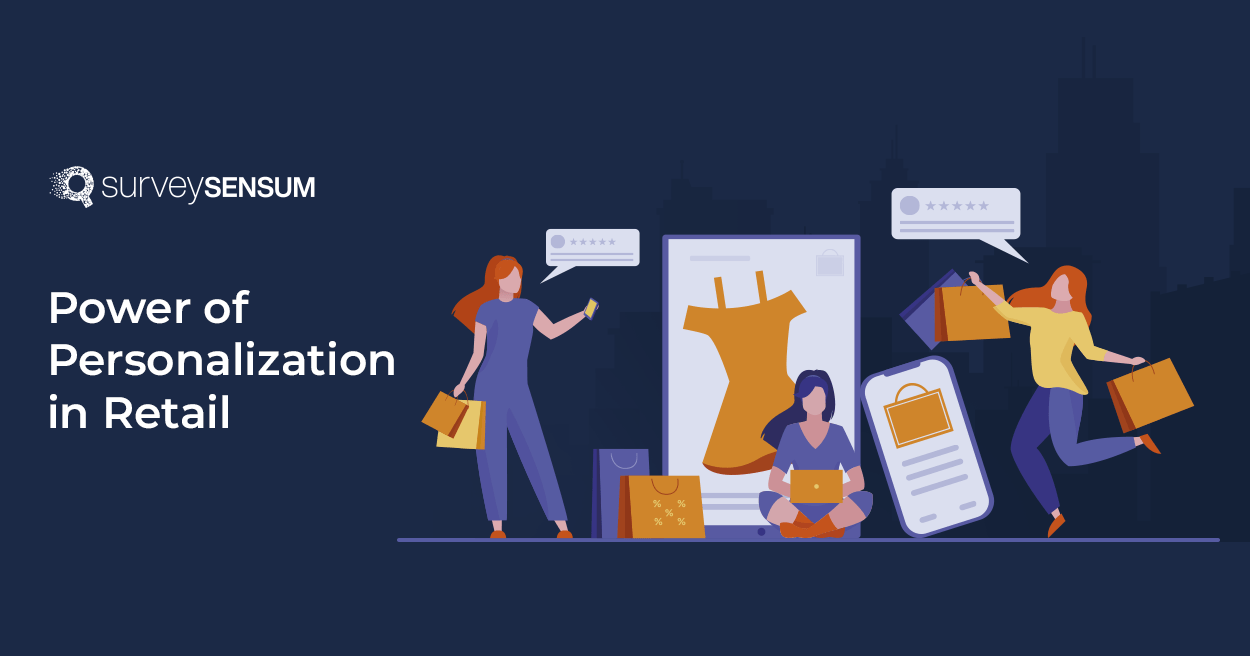
Imagine logging into your favorite online shopping platform and discovering a homepage that feels like it was designed just for you. The featured products, recommendations, and promotions are all precisely tailored to your unique interests and shopping history. Every click and purchase you’ve made in the past is utilized to create a personalized online shopping experience that truly understands and caters to your individual preferences. That’s the power of personalization in retail customer experience.
Personalization in retail is not a new concept but it is a concept that retailers still fail to grasp. But with the right retail customer feedback tool and advanced technologies, turning this concept into reality is getting easier.
Why is personalization important for ensuring a positive customer experience in retail?
And what are the benefits and challenges of implementing it?
Let’s find out!
What is Personalization in Retail?
Why is Personalization in Retail Important?
Challenges With Retail Personalization
Personalization in retail is all about creating a shopping experience that feels like it was designed specifically for the shoppers. It involves utilizing customer data, such as purchase history, browsing behavior, and demographic information, to provide targeted and relevant content, recommendations, and offers to your customers.
It is with a powerful retail customer experience strategy that brands like Amazon and Spotify create tailored experiences for their customers. The level of personalization you create for your customers enhances their experience, engagement, and satisfaction which ultimately drives your business growth. The highest level of personalization you can reach with your e-commerce is definitely offering product customization, by offering customers the possibility to craft their dream products directly online.
And there is so much more that it offers!
Let’s understand the benefits of personalization based on proven research and statistics.
“Personalization” is a word thrown around loosely in the retail industry and very few brands like Amazon, Sephora, and Starbucks have managed to crack the code.
The existence of this retail personalization gap illustrates a significant difference between the potential for personalization in retail and the current reality of what customers are actually receiving.
This gap exists because many retailers lack advanced technologies and only a small percentage truly excel in personalization.
One reason for this gap is the misconception that segmentation alone equals personalization.
While segmentation is important, it’s just the beginning. Many businesses mistakenly believe that dividing customers into groups is enough, but it’s not. In reality, true personalization goes beyond segmentation and requires a deeper understanding of individual customers.
Let’s understand this with an example.
Four customers bought the same peach-colored ceramic plate set from your store. So theoretically when we segment all the buyers, all of these customers would fall into the same market segment, right?
But what if the reason each of these customers bought that plate set differs?
Customers 1 & 2 bought it because they liked the color, customer 3 liked the art and customer 4 bought it because it was a bestseller. Now the action of all these customers were the same but their motives were different. Now, how to create a personalization strategy that could cater to each of these customers?
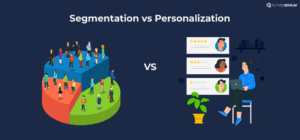
One-to-one personalization allows you to understand each customer’s unique journey and tailor your approach accordingly. This means you can use the information you have about them to encourage future purchases.
Now in the above plate set example, two of the customers chose the set because they liked the color. Now, without one-to-one personalization, you might mistakenly assume that all four customers prefer peach and send them all peach plates and accessories. But that’s not the case!
Only one customer bought the set because of its color preference.
By not personalizing the experience, you risk offering the wrong products or recommendations to your customers.
This can result in missed opportunities and even dissatisfaction.
Explore these 5 strategies, along with retail personalization examples, to create a superb personalized experience for your brand.
Each interaction your customer has with your brand, from being aware of your brand to making a purchase, provides ample opportunities for you to personalize their experience. Don’t just limit yourself to product recommendations, curate the entire customer journey.
No matter the medium your customer chooses to shop, create a seamless and unique experience for every shopper, without any hiccups along the way.
If your customer is coming to your online store, personalize every aspect of your website, from the home page to landing pages, product pages, and cart pages. If your customer chooses to visit your physical store then make sure your staff is accommodating and helpful, your products are displayed properly, the checkout process is hassle-free and so is the payment process.
This kind of personal touch will significantly increase the likelihood of them making a purchase and fosters a sense of loyalty toward your brand.
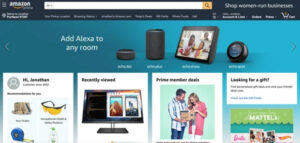
For example, Amazon delivers a personalized homepage for each of its customers based on their purchase history, wishlist, and cart. They create a personalized shopping experience by leveraging both historical and real-time customer data.
Also, don’t limit personalization to your website and store alone. Extend personalization to other channels as well, such as social media platforms and emails. Wherever you interact with customers, make sure to tailor the experience to their preferences and needs.
By achieving omnichannel retail personalization, you set your brand apart from competitors. You eliminate potential points of friction in the shopping journey, making it easier and more enjoyable for customers to engage with your business.
Customer feedback provides valuable insights into your customer’s experience, satisfaction, concerns, and suggestions related to your product or service. As a retail brand, you use this data to understand customer’s needs, preferences, expectations, and pain points, and identify areas for improvement.
Feedback can be collected at each touchpoint in the customer’s journey, from website navigation to product recommendations, from the checkout process to the payment process.
But the question here is when and where to draw the line.
Because if you push your customers too hard they might get frustrated which might result in dissatisfaction and a possible churn.
Here’s how to create a boundary and not overwhelm your customers for data.
By finding the right balance between personalization and respecting customer boundaries, you can create a positive shopping experience that leaves customers satisfied and more likely to engage with your brand.
Personalize your Surveys With SurveySensum – Request a Demo
Have you ever noticed that when you buy an item from Amazon you get recommendations for other products that might complement the product you want to buy?
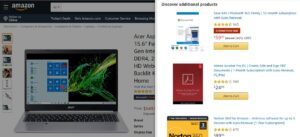
Here, the customer clicked to buy a laptop and got some additional product recommendations of three different anti-virus protections which is essential for laptop security so the customer might also buy one of them along with the laptop.
This is one of the most popular techniques of retail personalization is “Retargeting”.
In simple terms, this technique means reminding your customers of products they browsed or enquired about but didn’t buy. The reminders can be sent via emails, website pop-ups, ads, etc.
While it is a well-established and effective technique, it has great potential for mistakes where retailers can come off as creepy or annoying.
Your customers don’t want to be reminded of products they have already purchased.
For example, you bought a white T-shirt from Zara. One week later you received product recommendations for similar white t-shirts. But you have already bought a white T-shirt, why would you need another one?
Instead of sending recommendations for similar white t-shirts, Zara could have sent recommendations for matching looks or accessories that might go well with the t-shirt.
To provide customers with more relevant recommendations, companies should use advanced algorithms that suggest complementary products instead of simply showing what the customer has already viewed or purchased.
Tip: When it comes to retargeting messages, it’s essential to pay attention to who responds and who doesn’t. Adjust the frequency of messages accordingly and limit the number of impressions, especially for those who never respond.
For your customers, shopping is shopping no matter the medium. So, create a seamless shopping experience for them that cater to their convenience by connecting offline experiences with a digital touchpoint.
Nike is winning at this. Nike offers a seamless shopping experience that combines offline interaction with digital convenience. Customers can browse and shop from Nike from the comfort of their homes and can opt for their “Buy Online, Pick Up In-Store” option. With this option, customers can order online and pick them up at a nearby store. This feature combines the convenience of online shopping with the immediacy of in-store fulfillment.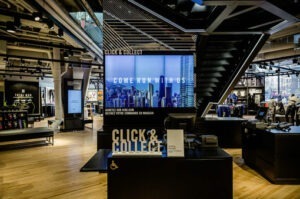
The best way to implement this strategy is through the implementation of a comprehensive CRM system that captures and integrates data from both online and offline channels.
All the customer data at each touch point in a customer journey should be consolidated into a centralized CRM. This unified view allows businesses to have a holistic understanding of their customers, regardless of whether the interactions occurred online or offline.
For instance, when a repeat customer visits your website again, the CRM can recognize their previous browsing behavior, in-store interactions, and even their loyalty program status. This enables you to deliver personalized content, product recommendations, and exclusive offers that align with the customer’s preferences and purchase history.
As a retail brand, with an online presence, you should know that chatbots give you a competitive advantage.
How? — By providing you with real-time customer data.
Chatbots are fast and can provide customers with quick problem resolutions.
According to a survey conducted by Userlike on Chatbot, 68% of respondents liked that a chatbot answered them quickly. They enjoyed the convenience that comes with chatbots.
Chatbots can help customers to navigate through your websites, it has the potential to store information about the customers and make recommendations based on their purchase history, preferences, etc. It can also provide 24×7 customer service and quick resolution.
But there can be some points of precautions that you need to take care of while implementing a personalized retail chatbot. Here are some points you can implement:
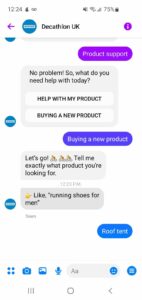
Here is an example of effective Chatbot support where the Chatbot is interacting with and guiding the customer through a purchase.
In conclusion, personalization has become a pivotal factor in the success of retail businesses. The importance of customer experience cannot be overstated – it is now the very essence of thriving in the retail industry. When done correctly, personalization can be a boon for both retailers and customers.
To create an exceptional retail customer experience, retailers should personalize their entire customer journey, actively gather and utilize customer feedback across various touchpoints, retarget, create a seamless shopping experience, and use personalized chatbot support. By implementing these winning strategies, retailers can resonate with their target audience and elevate the overall customer experience.
Also, bank on an effective and efficient retail customer feedback platform to keep track of data, follow-up withe detractors and resolve issues in real-time.
